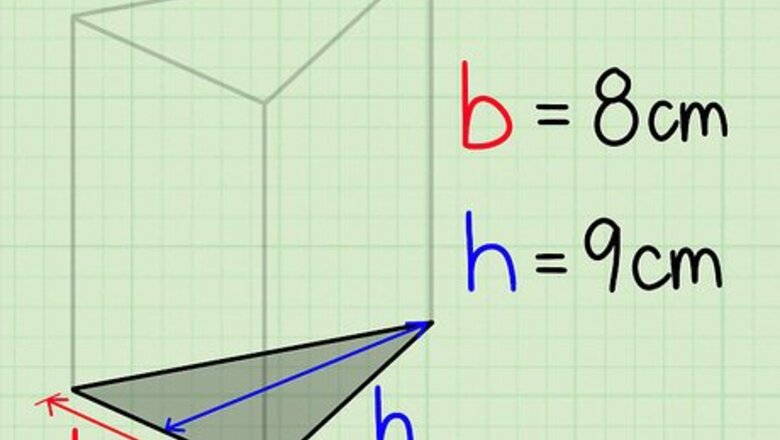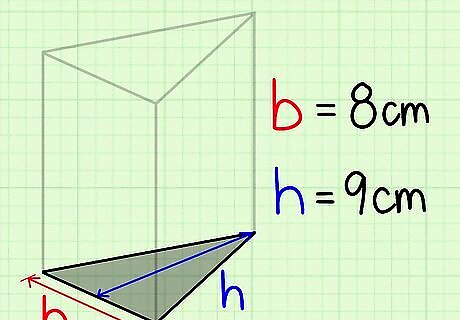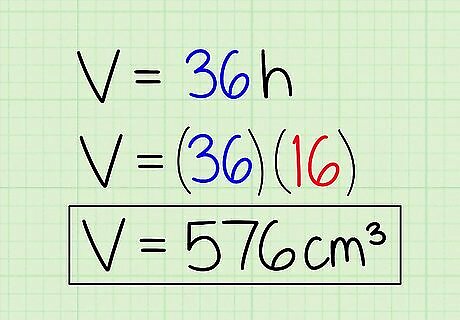
views
Finding the Area of the Triangle

Find the height and width of a triangle base. Look at the triangle and write down the base width and height. For example, your triangle might have a base of 8 cm and a height of 9 cm. Keep in mind that you're identifying the height of the triangle, not the entire prism. You can use either of the triangular bases, since they should have the same dimensions.

Plug the numbers into the formula to find the triangular area. Once you know the width and height of the triangle, put the numbers into the formula for calculating triangular area: Area = 1/2 x width x height. You might also see it written as A = 1 2 b h {\displaystyle A={\frac {1}{2}}bh} A={\frac {1}{2}}bh

Multiply 1/2 by width by height to get the area of the triangle. In order to find the area of the triangular base for the prism, multiply the width by the height by 1/2. Remember to put the answer in square units because you're calculating area. For example, if the base is 8 and the height is 9, your formula will look like A = 1 2 ∗ 8 ∗ 9 {\displaystyle A={\frac {1}{2}}*8*9} {\displaystyle A={\frac {1}{2}}*8*9}. The area of the triangle is 36 cm .
Figuring the Volume of the Prism

Plug the triangular area into the formula to find the volume of the prism. The area of the triangle is 1 of the 2 numbers you need in order to find the prism's volume. In the formula V = b h {\displaystyle V=bh} V=bh, the triangular area is A = b {\displaystyle A=b} {\displaystyle A=b}. To use the earlier example, the formula would be V = 36 ∗ h {\displaystyle V=36*h} V=36*h.

Identify the height of the prism and put it in the formula. Now you need to find the height of the triangular prism, which is the length of 1 of its sides. For example, the prism may be 16 cm high. Place this number in the h {\displaystyle h} h place of the formula. For example, your formula should now look like V = 36 ∗ 16 {\displaystyle V=36*16} V=36*16.

Multiply the triangular area by the height of the prism to find the volume. Since you now have all the parts of the equation, multiply the area by the height. The result will be the volume of the triangular prism. So, if V = 36 ∗ 16 {\displaystyle V=36*16} V=36*16, the answer is 576 cm .


















Comments
0 comment